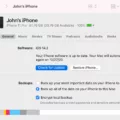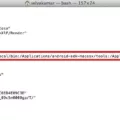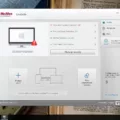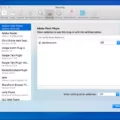Are you a Mac user who is interested in learning more about Java–the popular programming language? Then you have come to the right place! In this blog post, we will provide an overview of Java and discuss how you can determine where it is installed on your Mac device.
Java is a general-purpose programming language that has been around since 1995. It is used for software development, web applications, and mobile development, among other things. It is platform-independent, meaning that code written in Java can be run on any computer regardless of the operating system or hardware architecture. As a result, it has become one of the most widely used languages in the world.
If you are a Mac user and are interested in using Java on your device, then you will need to first determine if it is installed. You can do this by opening Terminal (which can be found under Applications > Utilities) and then typing “java -version” into the command line. If Java is installed, then you should see an output displaying the version number.
If Java is not installed on your machine, then you will need to download and install it before being able to use it. The JDK (Java Development Kit) installation path for Mac OSX is located at /Library/Java/JavaVirtualMachines/JDK-10./JDK/Contents/Home/. Once this directory has been opened in Finder, simply drag and drop the JDK icon into your Applications folder and wait for it to finish installing.
Now that we have gone over how to determine if Java is installed on your Mac device as well as how to install it if necessary, let’s discuss some of its uses! As mentioned earlier, one of the most common uses for Java is developing software applications. These applications can range from small desktop programs all the way up to large enterprise systems with multiple components running across multiple servers and clients. Additionally, many websites also use Java for their back-end operations such as database access or other server-side functions.
So now that you know a bit more about what Java can do as well as how to find out if it’s installed on your Mac device–are you ready to start learning how to use it? If so, there are plenty of great resources available online such as tutorials or courses that will help get you started!
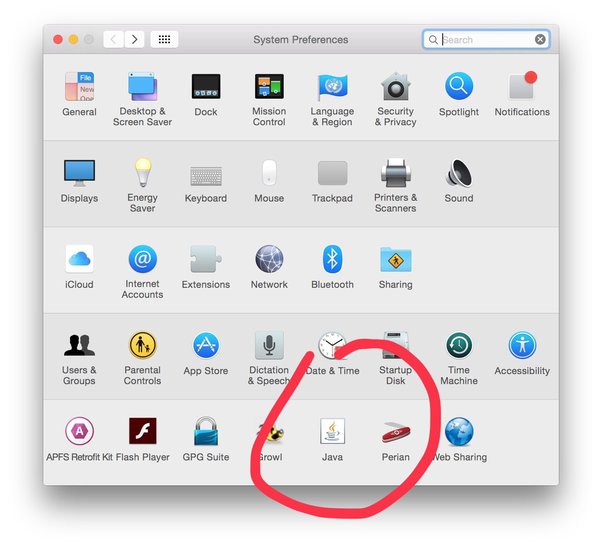
Finding the Java Installation Path on a Mac
Finding the Java installation path on your Mac is a straightforward process. First, open Finder and then click on the Go menu at the top of the screen. Next, select Go to Folder from the drop-down menu. In the text field that appears, type in “/Library/Java/JavaVirtualMachines” and click Go. This will take you to a directory containing all of the JVMs installed on your system. You can then locate and open whichever JVM you need to access its contents. The JDK installation directory is typically located within each JVM folder and is named “jdk-x.x.x_xx” where x represents numbers that vary depending on which version of Java you have installed (e.g., jdk-10). The root directory of the JDK software installation is located at /Library/Java/JavaVirtualMachines/JDK-10._xx/Contents/Home inside this folder.
Locating the Java Installation Directory
Finding where Java is installed on your computer depends on the operating system you are using.
For Windows machines, Java is typically installed in the C:/Program Files/Java directory. To check if Java is installed, open the Windows Start menu, and then search for “Java”. If you see a “Java” option in the search results, then it means that Java has been installed on your system.
If you don’t see any “Java” option in the search results, then it means that Java has not been installed on your system. In order to install Java, you will need to download the latest version from Oracle and then run the installation wizard.
For Macs, Java is typically installed in the Library/Internet Plug-Ins folder. To check if Java is installed, open up Finder and then click on Applications in the left sidebar. From there, scroll down and look for “Java” in the list of applications. If you see an entry for “Java” in this list, then it means that Java has been installed on your system.
If you don’t see any “Java” entry in this list, then it means that Java has not been installed on your system. In order to install Java, you will need to download the latest version from Oracle and then run the installation wizard.
Checking if Java is Installed on Mac Terminal
To check if Java is installed on your Mac terminal, you can perform a simple command in the terminal. First, open the terminal by searching for it in the search bar and clicking on the icon in the search results. Once in the terminal, run the command “java -version”. This will output the version of Java installed on your Mac. If this command does not return any output, then it is likely that Java is not installed on your Mac. You can also check to see if other versions of Java are installed by running “java -list” or “java -listVersions” in the terminal.
Installing Java 11 on a Mac
Java 11 is installed in the /Library/Java/JavaVirtualMachines/ directory on Mac OSX. You can find it by opening your Finder window and navigating to this directory. Once you’re in the JavaVirtualMachines directory, you should see a folder labeled “jdk-11.X.X_XX” where X is a version number, usually 11.0 or higher. This is the installation directory for Java 11 on Mac OSX.
Checking JAVA_HOME on Mac
In order to check if JAVA_HOME is set in Mac, you will need to open a terminal window and type in the following command: “echo $JAVA_HOME”. If it returns a path such as “/Library/Java/Home” then it means that JAVA_HOME has been set. You can also check your version of Java by typing “java -version” into the terminal. If the version of Java is not what you expect, you may need to update your version of Java.
Is Java Installed on My Mac?
Yes, Java is installed on Mac computers as part of the operating system. To check if Java is installed on your Mac, open System Preferences and select the Java icon. From there, you can view the version of Java installed on your machine. If no version of Java is listed, then it is not installed on your Mac.
Checking for the Presence of JDK and JRE on a Mac
You can determine if you have JDK and JRE installed on your Mac by opening the System Preferences, and then clicking the Other section. Once in this section, click the Java icon, which will open the Java Control Panel. You can then click About to display the version information. This will tell you if both JDK and JRE are installed on your system.
Checking If JDK is Installed
If you want to know if the Java Development Kit (JDK) is installed on your computer, the easiest way is to check your system’s environment variables. On Windows, open the System Properties window and click on “Environment Variables”. On Mac OS X or Linux, open a terminal window and type “echo $PATH”. This will show all of your system’s environment variables.
Look for a variable called “JAVA_HOME” or “JDK_HOME” – this variable should point to the directory where the JDK is installed. If it exists, then you have a JDK installed. You can also look for another variable called “Path” – this should list all of your system’s PATH directories, which includes the directory where your JDK is installed.
To double-check, you can also open up a terminal window and type in “javac -version”. This should tell you which version of the JDK is installed on your computer.
Finding the JDK 11 Path
In order to find the JDK 11 path, you need to first locate where it is installed on your computer. Depending on the operating system you are using, the installation location may be different.
For Windows users, the default installation path for JDK 11 is C:\Program Files\Java\jdk-11. The exact file path may vary depending on where it was installed and what version of Windows you are using.
For Mac users, the default installation path for JDK 11 is /Library/Java/JavaVirtualMachines/JDK-11. The exact file path may vary depending on where it was installed and what version of MacOS you are using.
Finally, if you have installed JDK 11 with a package manager such as Homebrew or Chocolatey, you can use their respective commands to find out the exact file path of your JDK 11 installation.
Updating Java_Home on Mac
Updating your JAVA_HOME on Mac is a quick and easy process. First, you’ll need to check if you have the correct version of the Java Development Kit (JDK) installed. To do this, open Terminal and type in “which java”. This will show you which version of the JDK is being used. If it’s not the version you need, you’ll have to download and install the correct one from the official website.
Once you have the correct version installed, check that it is being used by typing “java -version” into Terminal. If it’s not using the right version, then we need to set JAVA_HOME to point at it. To do this, enter this command into Terminal: export JAVA_HOME=/Library/Java/Home
This command tells your Mac where to look for your JDK so that it knows which one to use. Once this is done, your JAVA_HOME should be successfully updated on Mac!
Conclusion
In conclusion, Java is a versatile programming language that can be used to develop a wide variety of applications, from web applications to mobile applications. It is an object-oriented language that allows developers to write code more quickly and easily as compared to other programming languages. It has a large user base and is supported by many different operating systems, including macOS. With its robust libraries, powerful development tools, and cross-platform support, Java provides developers with the flexibility they need to create high-quality software solutions.

